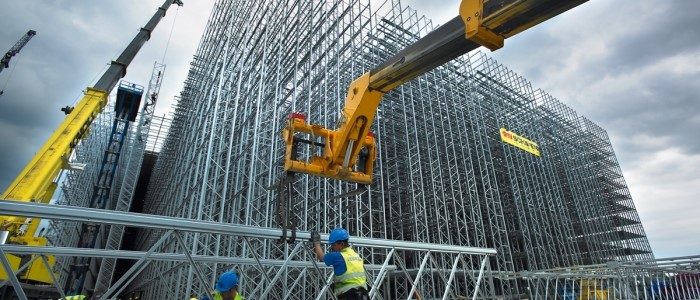What 2015 holds for the UK construction sector
While 2014 saw Britain take its first fledgling steps firmly out of recession, could 2015 be the year we see the country truly get back on its feet?
In this guide, we’ll take a look at what 2015 holds for the UK construction sector and explore what kind of economic climate tradesmen can expect.
Ups and Downs
While the construction industry, which currently accounts for six per cent of Britain’s economy, saw growth in 2014, it’s by no means been uniform. Despite a promising start to the year, the sector grew at its slowest pace since July 2013 in December.
However, according to figures from Markit, while civil engineering was the weakest field – the rate of growth was buoyed by a bullish housebuilding sector that, in 2014, enjoyed its strongest year since 1997.
“While new business growth moderated to its lowest for a year-and-a-half in December, UK construction firms are still highly upbeat about their prospects for output growth in 2015,” said Markit senior economist Tim Moore.
Findings from the Office of National Statistics (ONS) also reflect this slow, but steady, progress – despite a cooling of the market that prompted a 2.2 per cent drop in output at the end of last year.
Commenting on the statistics, Stefan Friedhoff, managing director for construction at Lloyds Bank’s commercial banking wing claimed the slowdown was unlikely to come as much of a surprise to industry figures.
“Construction companies are grappling with myriad issues, including inflation-led cost overruns, a competitive bidding environment and labour constraints. The shortage of skilled workers is undermining current output levels and, unchecked, it threatens the long-term health of the sector,” he warned.
On a more positive note, the ONS opted to upgrade its projections on construction output in 2014’s final quarter – doubling estimations from 0.8 to 1.6 per cent.
London
As is often the case, when it comes to construction – London stands as something of a statistical outlier.
According to the 2014 International Construction Costs Report from Arcadis, the capital is now the most expensive place to build anywhere in the world.
While a combination of factors, including the relative strength of the pound and growing price inflation, have increased the cost of construction throughout the UK, this situation has been particularly exacerbated in London.
It even outranks Switzerland in this regard, with Arcadis pointing to a lack of productivity and complex legal frameworks that reduce capacity and cause significant delays as reasons for the disparity.
Head of strategic research at the firm Simon Rawlinson claimed that high specification levels and a prime residential property market were the biggest contributors to this inflation.
“This is bolstered by the UK construction industry being much less productive than its US and European peers and the fluctuation in global currencies, especially the strength of the Sterling relative to the Euro,” he said.
Forecasts
So while we’ve established that 2014 was a positive, if slightly sedate, year for the industry, what does the future hold?
In the near future, the Construction Products Association’s latest report predicts five years of continued growth, although it warns that this could be imperilled by several risks.
According to its projections:
- Construction output will grow by 4.8 per cent in 2014 and 5.3 per cent in 2015.
- Private housing starts will see 18 per cent growth in 2014, slowing to 10 per cent in 2015
- The private commercial sector will increase by 3.7 per cent next year and 6.1 per cent in 2015.
Experian shared a similarly positive view, upgrading its growth forecasts for 2015 to six per cent, up from the 5.1 per cent it put forward last autumn.
It suggested the infrastructure sector would lead the charge, but also claimed the housing market would see significant growth.
What the experts say
A recent survey conducted by Construction Manager highlighted the biggest issues facing the industry in 2015. Predictions from prestigious organisations, including the BCIS, GVA and Tuffin Ferraby Taylor included:
- Housing policy updates, including guidance on zero carbon homes and Right to Build
- Emerging technologies like drones and 3D printing
- Cutting-edge materials offering enhanced acoustic and electromagnetic properties
- Price rises in oil and commodities
- Increased development activity in the south-east
- Tendering price rises
- The General Election
And You?
Do you have any thoughts on what 2015 will hold for the construction industry? If so, be sure to give us a shout on Twitter – we love to hear what you have to say.
And if you’re looking for timber materials for an upcoming project, don’t hesitate to get in touch today.
Image used courtesy of Wikimedia Commons.


